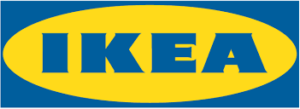Companies of various sizes and across many industries are taking concrete steps to lower their carbon emissions as consumers focus more on clean and green initiatives and climate change grows increasingly visible. Some companies are driven by core environmental concerns, and many by the fact that low carbon and other green sectors increasingly make good business sense on outright economic terms. Once being green leads to increased economic returns, businesses see the positive impact these efforts can have on their bottom lines
I’ve profiled a selection of businesses that are leaders of the pack in the low carbon economy.
-
Virgin Atlantic Airways
 Commercial aviation is one of the biggest contributors to world CO2 emissions. Virgin Atlantic has recognized that the industry needs to change its ways. Five years ago, Virgin teamed up with LanzaTech to develop a new jet fuel derived from the waste gases of industrial steel mills. Virgin is starting to see the fruits of the labor pay off. The UK-based airline will now work with Boeing to test aircraft and engine manufacturing requirements before approving the fuel for use on commercial aircraft by the year 2017.
Commercial aviation is one of the biggest contributors to world CO2 emissions. Virgin Atlantic has recognized that the industry needs to change its ways. Five years ago, Virgin teamed up with LanzaTech to develop a new jet fuel derived from the waste gases of industrial steel mills. Virgin is starting to see the fruits of the labor pay off. The UK-based airline will now work with Boeing to test aircraft and engine manufacturing requirements before approving the fuel for use on commercial aircraft by the year 2017. -
IKEA
Back in August, IKEA, the world’s leading home furnishings retailer, announced it will further its commitment to renewable energy by
 building the first biogas-powered fuel cell system on the east coast, at its store in New Haven, Connecticut. The Swedish company has also announced an ambitious goal: IKEA promises that by 2020 the company will have a net positive impact on the environment. In the past, the company’s sustainability efforts have borne fruit; IKEA’s sustainable products–e.g. LED bulbs and solar panels from its line of Products for a More Sustainable Life at Home now generate a billion dollars annually.
building the first biogas-powered fuel cell system on the east coast, at its store in New Haven, Connecticut. The Swedish company has also announced an ambitious goal: IKEA promises that by 2020 the company will have a net positive impact on the environment. In the past, the company’s sustainability efforts have borne fruit; IKEA’s sustainable products–e.g. LED bulbs and solar panels from its line of Products for a More Sustainable Life at Home now generate a billion dollars annually. -
Method
Method’s commitment to the environment is reflected in its company policies, as well as its efforts to be a completely carbon-neutral
 business through purchasing wind and solar energy credits to offset its carbon footprint. Method’s corporate headquarters is LEED-certified and has recycling and composting systems (with the worms to prove it) in place throughout the building. In addition to offering their employees financial incentives to encourage the use of public or self-propelled transportation, Method also invests in operational improvements that make the company’s supply chain more efficient.
business through purchasing wind and solar energy credits to offset its carbon footprint. Method’s corporate headquarters is LEED-certified and has recycling and composting systems (with the worms to prove it) in place throughout the building. In addition to offering their employees financial incentives to encourage the use of public or self-propelled transportation, Method also invests in operational improvements that make the company’s supply chain more efficient. -
New Belgium Brewing

Not only has New Belgium Brewing established environmental stewardship as a core value of the company, but New Belgium also goes above and beyond when it comes to assessing the company’s carbon emissions and conducting comprehensive research to identify areas in which the company can do more to minimize its carbon footprint. Regarding its impact on the environment, NBB’s commitment to transparency is admirable. The company sets an industry standard for other breweries and beer distributors to emulate.
-
Patagonia
 When it comes to sustainability initiatives, Patagonia has long been a leader among retailers of outdoor gear and apparel. In 2012, Patagonia went above and beyond the usual standards for transparency by releasing the Footprint Chronicles, a tool that helps Patagonia customers and stakeholders learn more about the environmental impact of the company’s global operations and supply chain. The interactive resource provides public access to a treasure trove of data and information regarding the company’s textile mills and factories. By focusing on what’s best for the environment–as opposed to what is most profitable–Patagonia shows its respect for the environment and demonstrates that the company’s priorities are where they should be.
When it comes to sustainability initiatives, Patagonia has long been a leader among retailers of outdoor gear and apparel. In 2012, Patagonia went above and beyond the usual standards for transparency by releasing the Footprint Chronicles, a tool that helps Patagonia customers and stakeholders learn more about the environmental impact of the company’s global operations and supply chain. The interactive resource provides public access to a treasure trove of data and information regarding the company’s textile mills and factories. By focusing on what’s best for the environment–as opposed to what is most profitable–Patagonia shows its respect for the environment and demonstrates that the company’s priorities are where they should be. -
Hanes

Since 2007, Hanes has reduced its carbon emissions by over 20 percent. For its sustainability efforts, the Environmental Protection Agency recognized Hanes with an “Energy Star” honor for the seventh consecutive year. As the only apparel brand to earn this recognition from the EPA, Hanes is a corporate role model when it comes to energy conservation, carbon emissions reduction, and sustainability.
